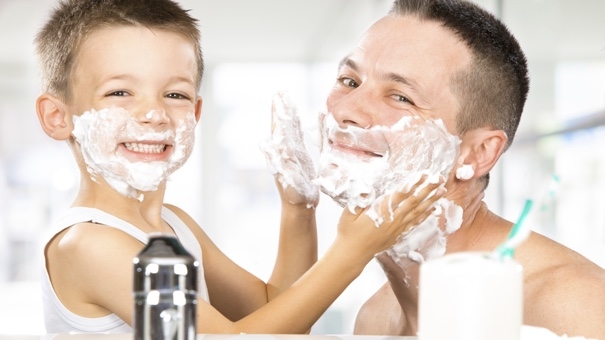1. Product Design Case Study: Fragrance
Fragrance Gives You A Closer Shave

Our sense of smell adds so much to our lives – enticing aromas beckoning from an oven, smells of flowers, ocean air, and romantic perfumes enhancing our special moments and memories. It can even protect us; the smell of smoke warns us of danger, and off-odors help us avoid spoiled food. Yet, fragrances can do more – they can alter our perception of the physical world, sending us cues that our kitchen is clean and our morning shave is smooth, maybe even more than it actually is. Wait – how can that be?
In my first job in consumer packaged goods, the Master Perfumer at Gillette generously taught me how vital fragrance is in personal care . His signature example was in shaving cream. He told the story of a massive consumer use test, with 3000 men testing Gillette Series gel in our South Boston labs. On one side of their face, panelists shaved with a new gel formula containing original Gillette Foamy fragrance; on the other side, the gel had a newly created fragrance, “Cool Wave”. Scent was the only difference.
The results were stunning. On 31 out of 32 shaving attributes (qualities), the new fragrance scored statistically significant wins over the current one – including closeness of shave, fewer nicks and cuts, less irritation and smoother shave. Yet everyone used the same blades and base shaving cream formula, and there was no physical way fragrance changed the physics of blade sharpness, cut angle, force or other physical attributes. The only explanation was that human perception of the physical world was changed by scent!
After a career move, I oversaw product creation for a new, natural cleaning brand, Green Works, which launched in 2007. Our natural ingredient definition limited the thousands of ingredient options (surfactants and other parts of the formula) normally available to create the products – to just a few hundred that met our natural criteria. At minimum we needed to match the cleaning performance of traditional products, but we wanted to outperform them.
Magic happened when we formulated a fantastic lemon oil fragrance into the ‘hero’ all-purpose cleaning product. That lemon smell was amazing. When we put it into a home use test, GreenWorks scored a decisive consumer preference win vs the leading traditional cleaner, exceeding the margin seen in lab results. We learned in this test that the fabulous smell helped GreenWorks seem to clean even better, and leave a nicer room behind!
I believe the power of fragrance is universal. Throughout my career, I’ve seen its impact on product perception in many brands and products, such as Right Guard antiperspirant, Burt’s Bees lip balm and skin cream, AngelSoft scented bath tissue, Stainmaster carpet cleaner, and most recently, Glade air fresheners. To design the right fragrance into a product, consumer liking is critical – but even more important is to pair the right scent to the ‘job’ the product is hired to do. Get this right and product perception gets a powerful subconscious lift – a “scent assist.” Get the pairing wrong, and even the best product design can fail.
As a product innovator, I love how the hard work of science and engineering can be boosted by the right fragrance to help a product deliver on its brand promise, and delight consumers. Someday, science will fully uncover the role our sense of smell plays in human perception. In the meantime, savvy consumer product developers would do well to fully harness this additional dimension of product performance – invisible, yet so powerful.
